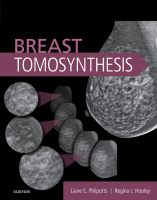Physical Address
304 North Cardinal St.
Dorchester Center, MA 02124

A successful screening program relies on the ability of radiologists to detect potential malignancies while maintaining an acceptably low recall rate. To do so requires rigorous adherence to quality controls for both personnel and equipment, as warranted by the US…

Acknowledgments The authors thank Diana Frillici and Annette Wiebeld for their valuable input. Introduction The limitations of conventional digital mammography have been well established. Conventional mammography creates a two-dimensional (2D) image of a three-dimensional (3D) structure, which may result in…

The introduction of tomosynthesis to an imaging facility is a positive experience for mammography technologists. Tomosynthesis improves the clinical workflow not only by allowing faster patient throughput but also by improving diagnostic accuracy, benefiting both the patients and breast imaging…

Screening mammography has undergone many improvements since widespread screening began in the 1980s. These improvements have led to improved image quality, reduced radiation dose, and more accurate examinations. In the early 2000s there was a major shift in imaging technology,…

You’re Reading a Preview Become a Clinical Tree membership for Full access and enjoy Unlimited articles Become membership If you are a member. Log in here